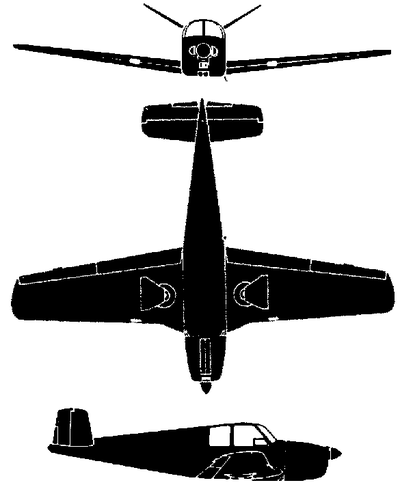The Engine Then Started To “Backfire Badly” Then “Became Quiet...”
Location: Rougemont, NC Accident Number: ERA23FA238
Date & Time: May 21, 2023, 11:15 Local Registration: N272S
Aircraft: Beech V35 Injuries: 1 Fatal
Flight Conducted Under: Part 91: General aviation - Personal

On May 21, 2023, at 1115 eastern daylight time, a Beech V35 airplane, N272S, was destroyed when it was involved in an accident near Rougemont, North Carolina. The pilot was fatally injured. The flight was operated as Title 14 Code of Federal Regulations Part 91 personal flight.
The pilot was reportedly flying his airplane to the Hudson Valley Regional Airport (POU), Wappingers Falls, New York, for an annual inspection. According to preliminary Automatic Dependent Surveillance-Broadcast (ADS-B) data, the airplane departed Oconee County Regional Airport (CEU), Clemson, South Carolina, about 0948 and climbed to an altitude of about 5,500 ft mean sea level (msl) on a northeasterly heading. The airplane descended to 2,600 ft for a portion of the flight and then returned to 5,500 ft. Around 1110, the airplane began to slow and descend. About 1 minute later, the airplane made a 90° left turn followed by a 90° right turn, while continuing to slow and descend on a northeasterly heading. The last data point at 1115 showed the airplane at 1,100 ft msl about 375 ft west of the accident site with a ground speed of 56 knots. This data point location corresponded to the location of north-south oriented electric power transmission lines; however, no damage was reported or
observed to the power lines or their towers.
According to a witness located less than 1 mile from the accident site, the airplane was “loud and low” and flying toward the Raleigh Regional Airport at Person County (TDF), Roxboro, North Carolina, which was less than 5 miles to the northeast. He stated that just before the airplane came into sight, the engine “died down then came back up.” The engine then started to “backfire badly” then “became quiet,” and the airplane flew out of his sight. Another witness reported that there was a “knocking sound” to the engine’s “spitting and sputtering.” Both witnesses heard an impact shortly after the airplane flew overhead. Examination of the accident site and wreckage revealed that the airplane impacted a narrow patch of trees between two fields about 3.7 nautical miles southwest (211°) of TDF, and about 375 ft east of unmarked power transmission lines which measured 115 ft above ground level (agl). Severed treetops were
observed that were consistent with the airplane impacting trees in a 30° right bank and continuing through the trees on a 090° flight path. The airplane came to rest upright oriented on a heading of 126° true. There was evidence of a postcrash fire at the accident site which was at an elevation of 612 ft msl.

The wreckage was located about 55 ft east of the initial severed treetops that were broken about 19 ft above the ground. All major components of the airplane were located at the accident site; however, the fuselage and cabin were destroyed by the postcrash fire. The debris field was limited to the immediate area where the wreckage came to rest. The wings remained attached to the main wing spar and the empennage remained intact and attached to the fuselage via the lower fuselage skin and various cables. The left wing, with flap and aileron attached at all connection points, was mostly intact and lodged partially under a berm. The inboard half of the flap was thermally damaged. The left main landing gear was retracted, and the left fuel tank was intact and contained a liquid consistent in smell and color with 100LL aviation fuel. The right wing exhibited significant damage consistent with tree impact and was fractured between the aileron and flap, with a portion of severed pine tree lodged in the
fracture. The wing root was thermally damaged, and the fuel tank was breached and void of fuel. The right main landing gear was hanging freely.
The engine remained partially attached to the engine mounts. Two holes were observed on top of the engine crankcase adjacent to cylinder Nos. 3 and 4. The propeller hub remained attached to the engine at the engine crankshaft propeller flange. All three composite propeller blades were detached at the blade roots and exhibited impact and/or thermal damage. All primary (ruddervators and ailerons) flight control surfaces with their appropriate trim tabs and flaps were examined, and continuity of all primary flight control cables were confirmed from the cockpit to their respective flight control surfaces. Continuity of the elevator trim control cable was confirmed from the cockpit to the flight control trim surfaces. The right flap actuator remained attached to the aft wing spar and flap attachment. The flap actuator extension was measured at 1 3/4 inches, which corresponded to the fully retracted position. The left flap actuator was thermally damaged.
The cockpit was destroyed. The instrument panel and engine controls were thermally damaged. The fuel selector handle was in the off position, and the fuel selector valve was in the off position. The 1125 weather observation at TDF included visibility of 4 miles in light drizzle, scattered clouds at 1,100 ft agl, and a ceiling overcast at 1,800 ft. Marginal visual flight rules conditions prevailed in the area at the time of the accident.
The wreckage was retained for further examination.
 ANN's Daily Aero-Term (04.26.24): DETRESFA (Distress Phrase)
ANN's Daily Aero-Term (04.26.24): DETRESFA (Distress Phrase) ANN's Daily Aero-Linx (04.26.24)
ANN's Daily Aero-Linx (04.26.24) Airborne 04.22.24: Rotor X Worsens, Airport Fees 4 FNB?, USMC Drone Pilot
Airborne 04.22.24: Rotor X Worsens, Airport Fees 4 FNB?, USMC Drone Pilot Airborne 04.24.24: INTEGRAL E, Elixir USA, M700 RVSM
Airborne 04.24.24: INTEGRAL E, Elixir USA, M700 RVSM Airborne-NextGen 04.23.24: UAVOS UVH 170, magni650 Engine, World eVTOL Directory
Airborne-NextGen 04.23.24: UAVOS UVH 170, magni650 Engine, World eVTOL Directory




